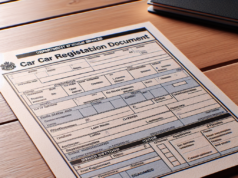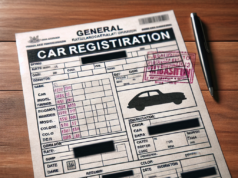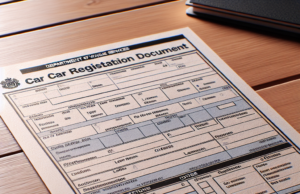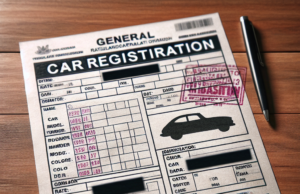
What is Defensive Driving?
The National Safety Council defines defensive driving as “driving to save lives, money and time, in spite of the conditions around you and the actions of others.” This definition derives from the National Safety council’s Defensive Driving Program, which teaches drivers proper driving techniques and dispositions. Defensive driving, therefore, is a form of training for drivers that stretches beyond simply understanding the laws of the road and the basic mechanical functions of driving. The overall aim of defensive driving is to reduce the presence of aggressive or reckless drivers on the road. Defensive driving courses preach caution and awareness; drivers must be attentive not only to the rules of the road, but also to their fellow motorists.
Defensive driving courses ultimately reduce the risks associated with driving by anticipating dangerous situations, despite adverse driving conditions or mistakes made by other drivers on the road. These goals are achieved through adherence to several rules, along with the practice of specific driving techniques.
A number of government agencies, private schools and nonprofit organizations have launched defensive driving courses to improve the public’s driving skills. In addition to improve a person’s driving skills, the bulk of U.S. states provide incentives for completing an approved defensive driving course by offering insurance discounts or ways to mask tickets from one’s driving record. In some jurisdictions, these courses are labeled traffic schools or defensive driving programs. States that offer the biggest incentives to drives are Arizona, California, Florida, New Jersey and New York.
Why is Defensive Driving is Important?
Defensive driving is paramount because more than 40,000 people die in motor vehicle accidents each year in the United States. To lessen this blow, a number of states now require defensive driving courses for individuals who have accumulated too many points on their driving records or have previously had their driving privileges suspended.
Defensive driving courses are required for drivers who are deemed at risk of getting in accidents or who display immature or reckless behavior behind the wheel. The intent of these courses is to teach these drivers how to be cautious and maintain an awareness of their surroundings. Experienced instructors will teach these individuals the current rules of the road and the latest techniques in motor vehicle handling. Overall, the skills taught in defensive driving courses promote prudence behind the wheel and help reduce accidents across the board.
The specific tactics of a defensive driving course and the mandatory participation in said courses will vary based on jurisdiction. Some states in the U.S. will require participation to those drivers who have accumulated a certain number of points, while other states will simply suggest the course to all young drivers. Regardless of administration or the participants involved, defensive driving courses promote safety through understanding and mature driving habits.
Benefits offered by a Defensive Driving Program:
In addition to the obvious benefits (becoming a better driver/reducing risks associating with driving) participation in a defensive driving program offers point reduction in states that utilize a point system. States, such as New Jersey, will allow drivers to participate in defensive driving programs once every five years to achieve a two point reduction from a driving record. That being said, states implement special rules regarding what types of points may be reduced. For instance, New Jersey will not dismiss traffic tickets regardless of participation in safe driving courses.
Defensive Driving Techniques:
As mentioned above, each state in the U.S. will focus on different areas of safe driving within their programs. That being said, there are some universal techniques that all drivers should practice to mitigate the dangers associated with driving. The New York Department of Motor Vehicles, through their Driver’s Manual, devotes a chapter to defensive driving and lists the following as the basic methods:
• Always be prepared when driving; look ahead and look at all your mirrors every 5-10 seconds
• Maintain proper speed; do not drive too slow or too fast. Monitoring your speed is essential.
• Always signal when changing lanes or turning.
• Leave enough distance and time between you and your fellow motorists.
• Always wear your seat belt.
• Never drive if you are tired, medicated or under the influence of drugs or alcohol.
• Maintain control of your vehicle at all times.
When you employ the above techniques and driving methods you will minimize the number of risks you face. You will become a better, safer and smarter driver; one who is more equipped to handle all the hazards and dangers that the road presents.
Examples of Defensive Driving Schools in the United States:
The below example represents the state of New Jersey’s rules, laws and administration process regarding a defensive driving school:
As mentioned above, New Jersey offers safe driving courses as a means to reduce the number of points on your driving record. For drivers 50 years of age and older, New Jersey, through the AARP, offers the “55 Alive” driving course as a refresher. This senior driver’s program provides a minimum 5% discount on your auto insurance premium. The “55 Alive” program is only offered in select cities and towns throughout the state.
In addition to these optional driving programs, the state implements a mandatory training program as part of a sentencing provision for drivers with certain traffic violations on their record. This mandatory program, which is offered by the Motor Vehicle Commission, aims to improve reckless or immature driver habits.
The mandatory programs are offered to individuals who are in danger of losing their license. After an individual has racked up 12-14 points on their record, the “driver improvement program” can eliminate up to three points on a driving record. Additionally, when a driver passes this course, their license will not be suspended. Information regarding these programs will be mailed to qualifying drivers (individuals who have accumulated 12-14 points on their driving record) by the state.
New drivers—individuals who have had their license for two years or less—will be assigned to Probationary Driver Schools if they are convicted of multiple violations that total more than four points in that two-year timeframe. The cost of this program is $100. The state of New Jersey will inform qualified drivers if they are required to fulfill this course. After the individual has passed this court, a maximum of three points will be reduced from their record. However, the driver will still face a one-year probation period. If the driver accumulates more violations during this timeframe, their driving privileges will be suspended indefinitely.
If a driver has been convicted of any drug or alcohol-related violation, they will be required to attend an Intoxicated Driver Resource Center program. These programs will include mandatory defensive driving classes related to Alcohol use. Moreover, the Highway Safety Education program will evaluate participant’s individual drug and alcohol problems and offer rehabilitation or treatment programs if necessary. Successful completion of these programs will help a driver get their license reinstated. Refusal to participate in these programs; however, could lead to jail time or a longer license suspension. These courses range in price from $350 to $500.






















